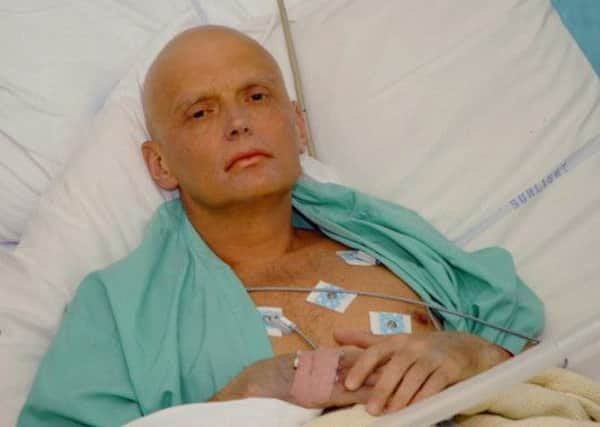Poisoned spy’s body ‘a hazard after he was killed’


Dr Nathaniel Cary, a Home Office forensic pathologist, said Mr Litvinenko’s radioactive body was “very hazardous” and was transferred to a secure site for tests.
During the post-mortem examination, Dr Cary and his colleagues wore two white safety suits, protective gloves taped at the sleeves and specialised hoods, into which air was piped through a filter.
Advertisement
Hide AdAdvertisement
Hide AdMr Litvinenko, 43, a former Russian spy who is thought to have been working for British secret service MI6 during his time in the UK, died at University College Hospital nearly three weeks after he had consumed tea laced with polonium-210 on November 1 at the Millennium Hotel in London’s Grosvenor Square.
Dr Cary told the inquiry: “It has been described as the most dangerous post-mortem examination ever undertaken in the western world and I think that is probably right.”
Mr Litvinenko, who lost all his hair before his death, showed signs of multi-organ failure as a result of acute radiation poisoning, Dr Cary told the inquiry.
His cause of death was recorded as acute radiation syndrome, the pathologist said.
Advertisement
Hide AdAdvertisement
Hide AdDr Cary went on: “It appears Mr Litvinenko ingested a large quantity of polonium-210 on or around November 1 2006, largely if not wholly by oral ingestion, rather than by inhalation.”
“The calculated amount absorbed was in far excess of known survivability limits,” he added.
Asked if there was anything in Mr Litvinenko’s clinical history inconsistent with acute radiation syndrome, Dr Cary said: “No. In effect, the polonium-210 detected is the smoking gun in the case. It shows you what happened.”
The pathologist agreed there was no precedent for alpha radiation poisoning in this way.
Advertisement
Hide AdAdvertisement
Hide AdAnother pathologist, Dr Ben Swift, agreed it was the most dangerous post-mortem to have ever taken place and there was no other recorded instance in the UK or overseas.
He said inflammation in the back of Mr Litvinenko’s throat and wind pipe suggested he had swallowed the polonium-210.
An anonymous scientist, who gave evidence from behind a screen and was known only as A1, told the inquiry there was nothing found in traces on the so-called polonium trail in the Litvinenko case that would help identify its source, that is, a specific nuclear reactor.
The scientist, who worked for the Atomic Weapons Establishment for 30 years and is one of the country’s leading nuclear scientists, said there is a legitimate market for polonium-210 in industry for preventing static electricity.
Advertisement
Hide AdAdvertisement
Hide AdLooking at contamination levels along the so-called polonium trail, the scientist said it was more than probable that the teapot from which he drank tea on November 1 was the “primary source of contamination”.
A series of 3D renderings of the teapot showed high levels of polonium-210 in the spout.
Two men - former KGB bodyguard turned politician Andrei Lugovoi and Dmitri Kovtun - were named as the main suspects in 2007. Both deny involvement..
Earlier, a counter-terror officer working on the investigation told the inquiry the two main suspects are still wanted for his murder.
Advertisement
Hide AdAdvertisement
Hide AdDetective Inspector Craig Mascall, who works for Scotland Yard’s counter-terror command, has been working on the probe into Mr Litvinenko’s poisoning since two days before his death on November 23 2006. He told the inquiry: “It’s still an on going criminal investigation.”